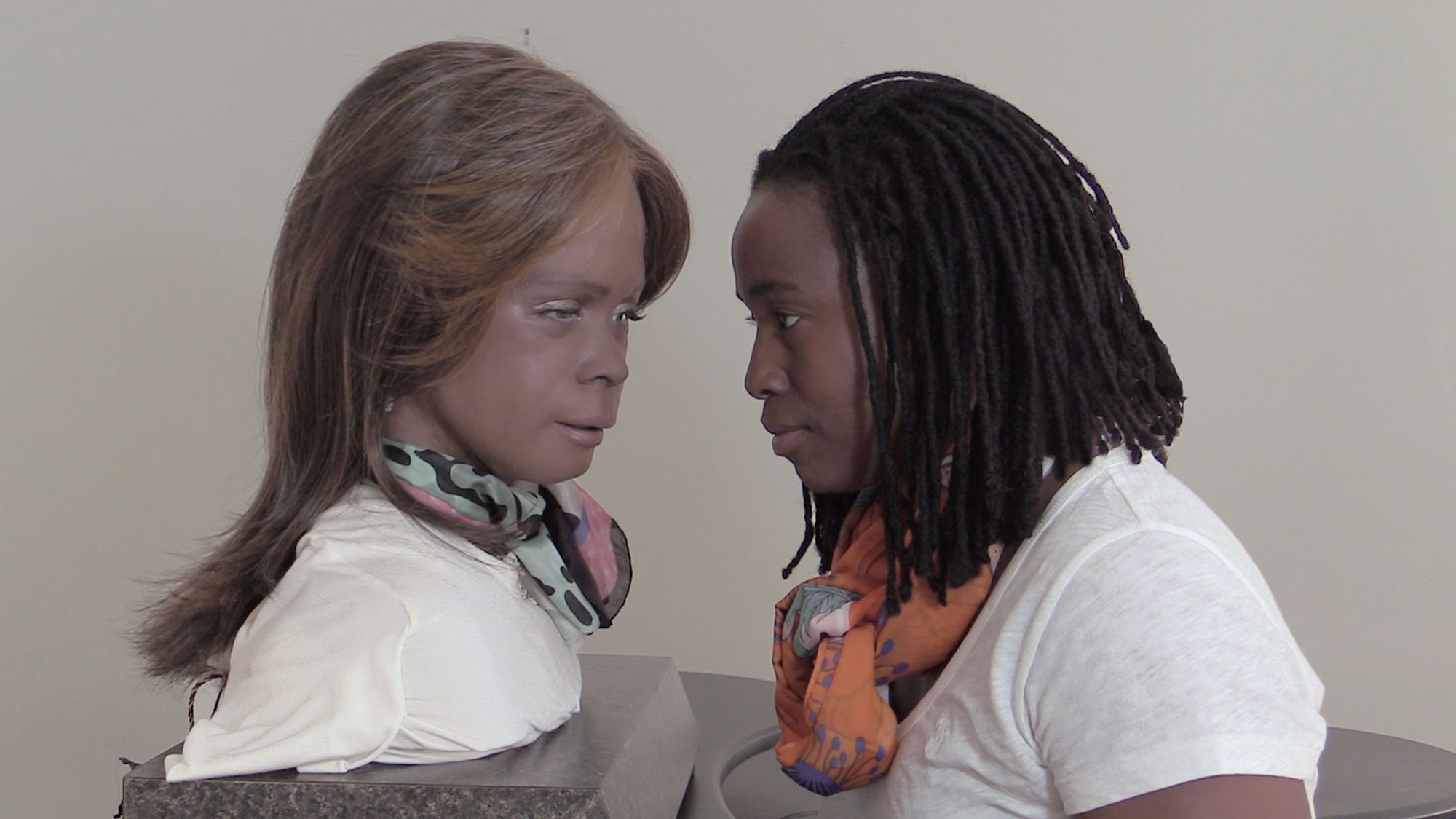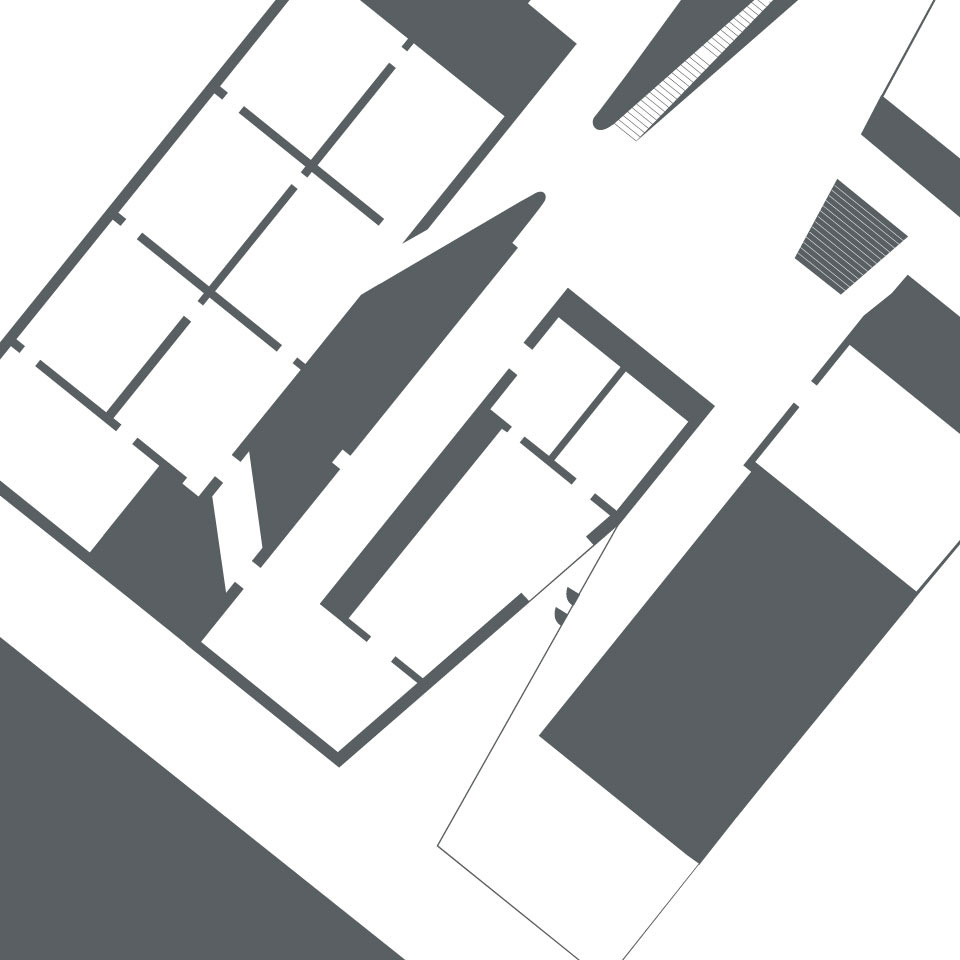\ Digital Guide
Use this digital guide and interactive map to learn more about each artist and installation in the Uncanny Valley exhibition.
\ Gallery 11
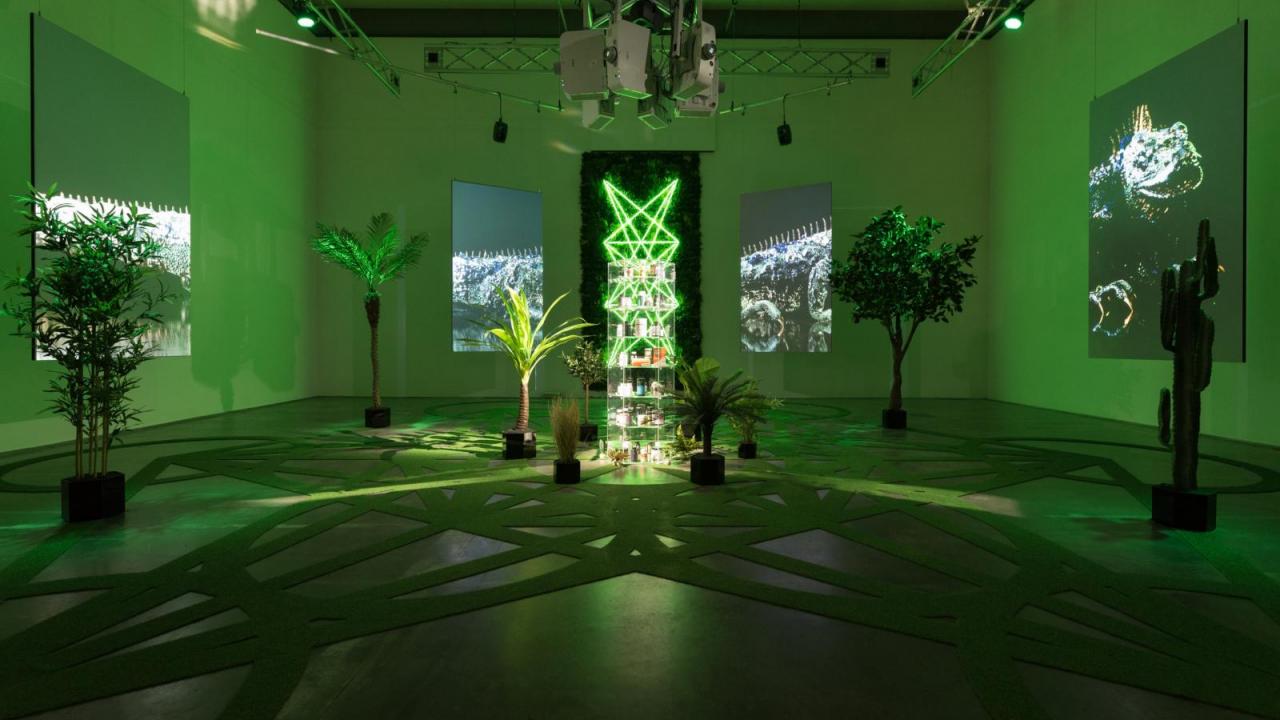
Zach Blas
The Doors consists of a six-channel video projected onto glass panels set in an artificial garden populated with fake plants, nootropics (“smart drugs”), and an Astroturf cutout of Metatron’s cube—a symbol of sacred geometry often used in nootropic branding. Opening a portal into tech culture, it highlights the industry’s conflation of 1960s countercultural attitudes with neoliberal ideals.
\ Gallery 12
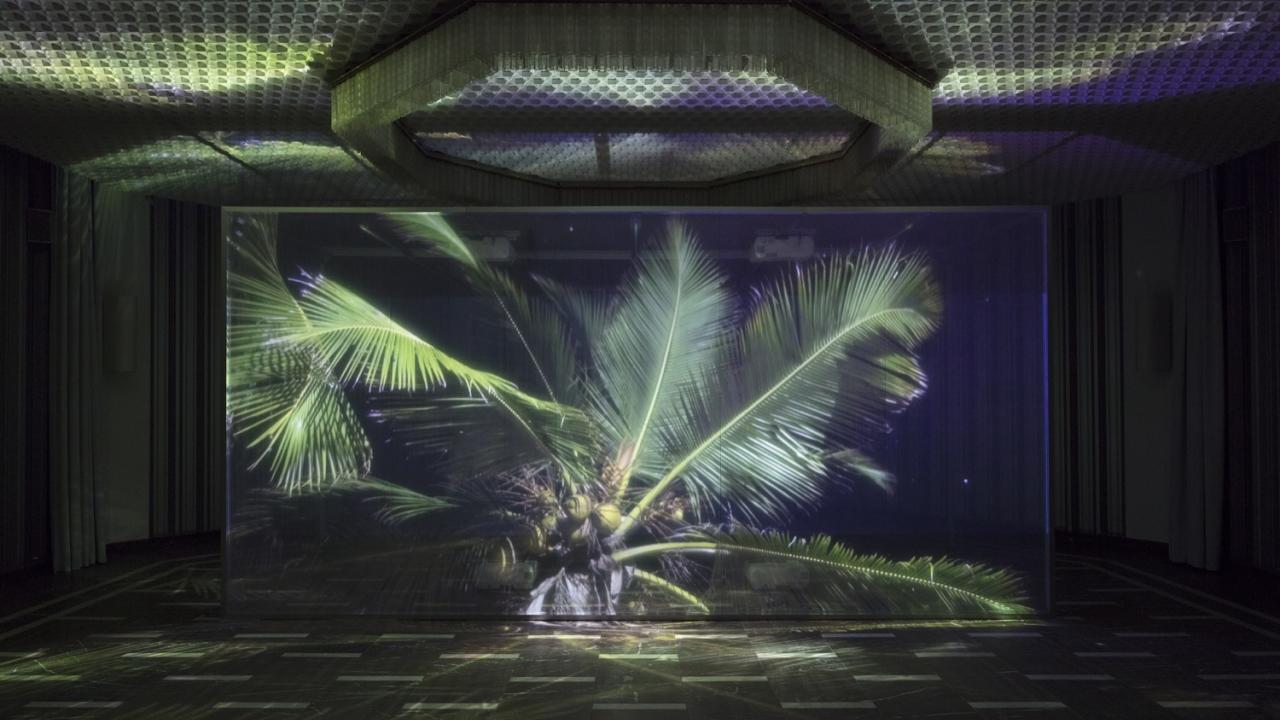
Christopher Kulendran Thomas, in collaboration with Annika Kuhlmann
Being Human is set against the backdrop of a newly prosperous Sri Lanka. The country is home to a burgeoning contemporary art market that emerged in the wake of a prolonged civil conflict between the national government and the Liberation Tigers of Tamil Eelam, which ended in 2009. The film confronts the political erasure of Eelam, where Christopher Kulendran Thomas’s family is from, as it examines the foundations and legacies of humanism—a Western belief system that insists on an individual’s indivisibility, agency, and authenticity. It asks: What does the human in human rights stand for? And who determines whose rights fall within its protections?
Ian Cheng
BOB (Bag of Beliefs) presents a virtual life-form composed of six unique forms of algorithmic consciousness. Although BOB has a simple shape—in part inspired by the whimsical animation of Japanese artist Hayao Miyazaki—it represents a fascinatingly complex instance of artificial intelligence.
Influence BOB’s life by making an offering via the BOB Shrine app. Download the free iOS or Android app by visiting bobs.ai.
\ Gallery 13
Forensic Architecture
Forensic Architecture is an independent research agency that uses spatial methods to investigate civil and human rights violations. The group relies on open-source, citizen-gathered evidence, such as civilian camera footage, audio recordings, and eyewitness testimony. They analyze this information through an architectural lens, using digital and physical models, 3-D animations, virtual reality environments, and cartographic platforms. Their pioneering methods have yielded decisive evidence in legal cases in national and international courts, citizen tribunals, and human rights processes, and have led to military, parliamentary, and United Nations inquiries.
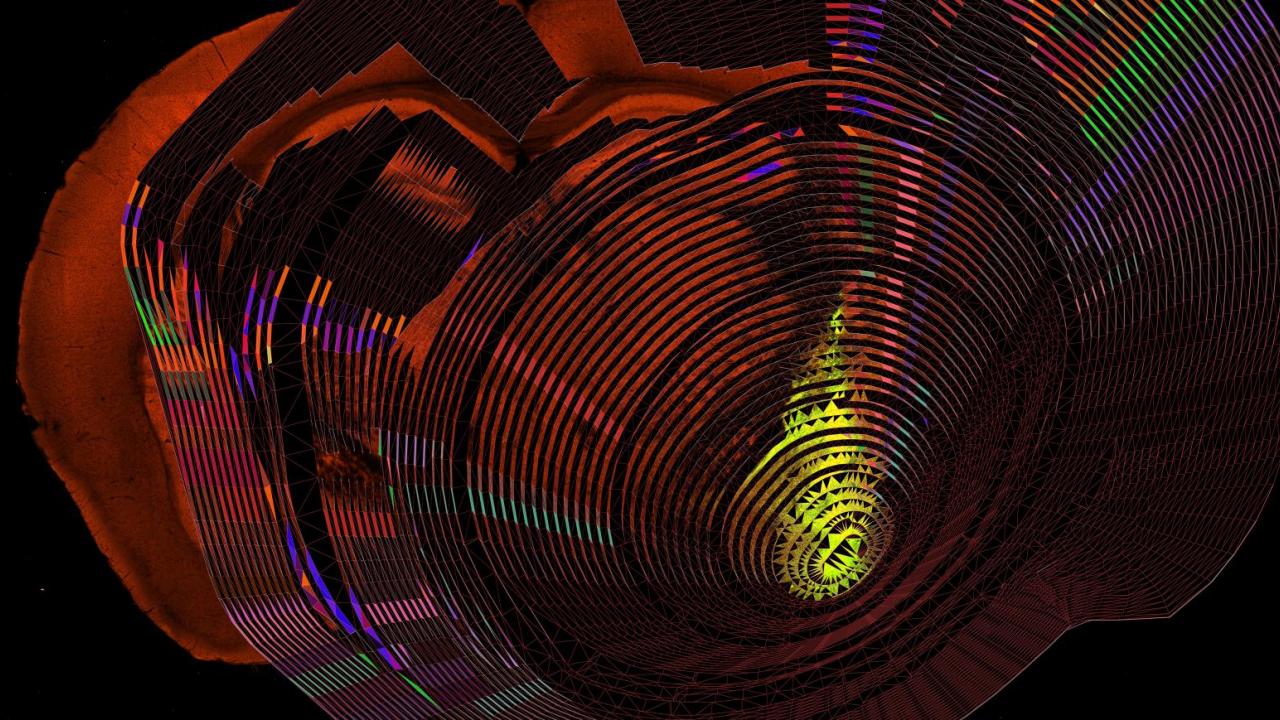
Zairja Collective
The Zairja Collective’s intricate works overlay open-pit designs, sourced from global mining corporations, with manipulated visualizations and photographs of neuron fields, provided by bioscience institutes that research the mammalian brain. The works merge collage—a medium that combines disparate images—with décollage—a form that involves the physical interlacing of superimposed prints. Through this interweaving, the artists create a series of shifting dynamics between mining pits and neurons.
\ Gallery 14
Simon Denny
Simon Denny conceived the sculpture and collages here partly in response to a 2018 essay regarding the Echo, Amazon’s home-surveillance artificial intelligence system, cleverly marketed as the personal assistant Alexa. In their essay, “Anatomy of an AI System: The Amazon Echo as an Anatomical Map of Human Labour, Data and Planetary Resources,” Kate Crawford and Vladan Joler trace the extractive processes involved in the Echo’s production. They expose how its sleek design belies a trail of environmental disruption in its wake. Their report comes as a wake-up call, alerting readers to the ecological and humanitarian impact of a data-driven economy. Connecting physical mining to data mining, it suggests that our trade in data—which has replaced oil as the most valuable resource on Earth—is just as detrimental to our planetary health.
To activate the AR version of the King Island Brown Thornbill, use one of the provided iPads near the cage or download the free iOS app. Point the device at the bird icon on the pyramid and scan the marker.
Compatible with iPhone 6s and above. Developed by Art Processors
Agnieszka Kurant
Agnieszka Kurant’s work draws on models of collective intelligence to reconsider the concept of the individualized self. A.A.I. is a series of sculptures made of sand, gold, glitter, and crystals, constructed entirely by termites. By repurposing the colony’s collective intelligence as art production, the artist comments on the erosion of singular authorship, while the structures themselves serve as visual symbols of collective crowdsourced labor. The series alludes to online platforms like Amazon Mechanical Turk (AMT), which allows individuals and corporations to post computer-based tasks that an anonymous, collective workforce carries out for a nominal wage. The workers’ invisibility creates the illusion that the tasks are being completed by a machine, leading some to describe their labor as “artificial artificial intelligence”—the A.A.I. of this series’ title.
\ Gallery 15

Lawrence Lek
AIDOL focuses on the dynamic between humans and artificial intelligence. The film reflects on a common fear provoked by new technology—the threat of human obsolescence. It stars Geomancer, or Geo, a former weather satellite that descends to Earth to pursue its dream of becoming the first AI-based artist. To advance its goal, Geo writes a song for Diva, a formerly successful pop star struggling to create new music with mass appeal. Using its advanced computational abilities, Geo scans Diva’s song catalog to create an amalgamated composition that listeners perceive as a hit.
Screenings: 9:45 am, 11:15 am, 12:45 pm, 2:15 pm, 3:45 pm
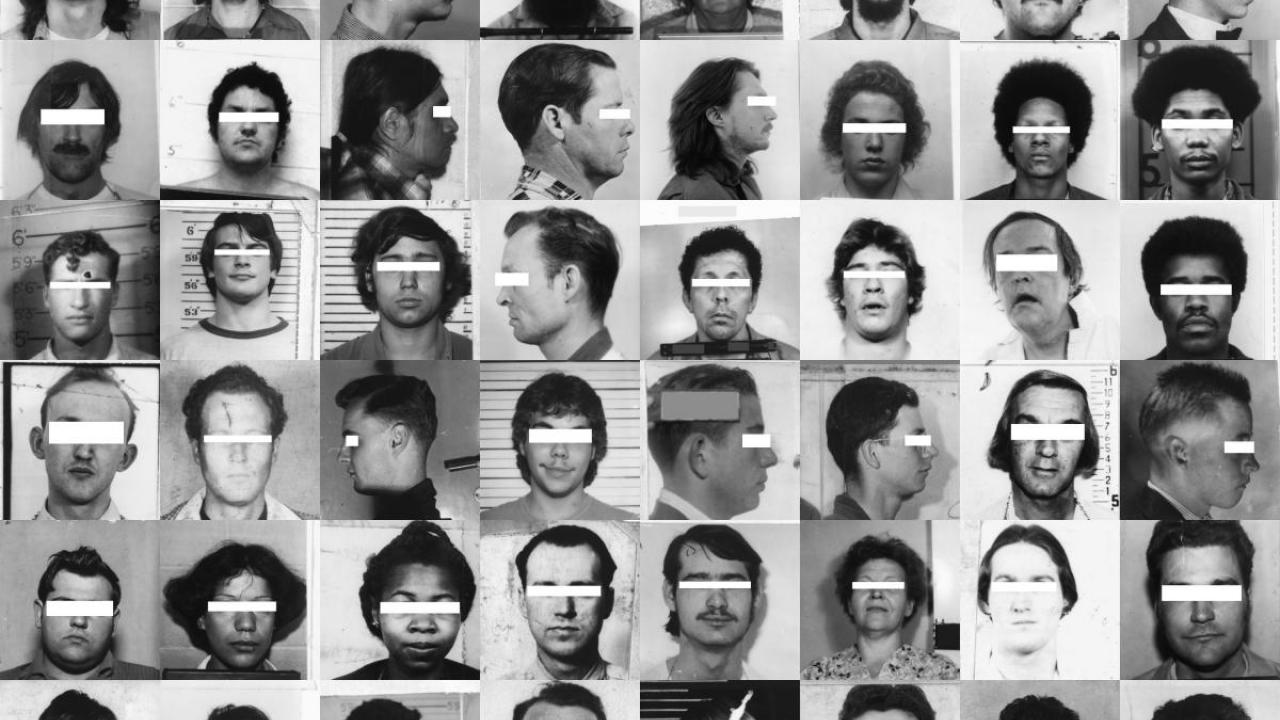
Trevor Paglen
They Took the Faces from the Accused and the Dead . . . (SD18) continues Trevor Paglen’s investigation into the political dimensions of artificial intelligence. Paglen is concerned with the data sets developed to train AI systems and the biases, errors, and ideological positions built into them. He is particularly interested in image sets that represent and interpret human beings, which have been used to train facial-recognition software. His commission for this exhibition takes one such image set as its subject to consider the role of computer vision in automating and optimizing the operations of states and industries.
\ Gallery 16
Hito Steyerl
The City of Broken Windows uses video, text, and sound to portray a society in which technology functions as a tool of capitalism—serving the privileged and ignoring the historically underprivileged, exacerbating rather than tempering social imbalance. At its core are two videos, Broken Windows and Unbroken Windows. Broken Windows documents the activities of the “artivist” Chris Toepfer. Toepfer’s New Jersey–based organization, the Neighborhood Foundation, replaces broken windows and doors with paintings in underserved communities across the United States. This restorative gesture counteracts the “broken windows” theory widely adopted by law enforcement, which posits that a broken window is a symptom of civic disorder that leads to an escalation of fear and crime. The group’s actions instead suggest the “broken window fallacy,” a nineteenth-century parable about economic stimulus related to destruction and recovery, as during a war. Although such activity presents an illusion of growth, it does not actually contribute to the long-term prosperity of society.
\ Gallery 17
Lynn Hershman Leeson
Shadow Stalker addresses the troubling implications of implementing artificial intelligence in the social sphere. Those who enter their email address will trigger an internet search of their digital footprint—the trail of data that they create online. Their results will appear within a projected body-shaped shadow that stands in for their own. Offering a poignant reminder of the degree of people’s (self-) exposure, this digital reflection confronts users with information they may not even remember having volunteered. The project highlights people’s vulnerability in an economic environment in which personal data has become the most valuable commodity. In the accompanying video, a figure whom Lynn Hershman Leeson calls the “Spirit of the Deep Web” warns against complacency toward one’s online privacy: “Take hold of your avatar. Honor your shadow. Hold it tight. It contains your future and your past, and, like DNA, history refuses to evaporate.”
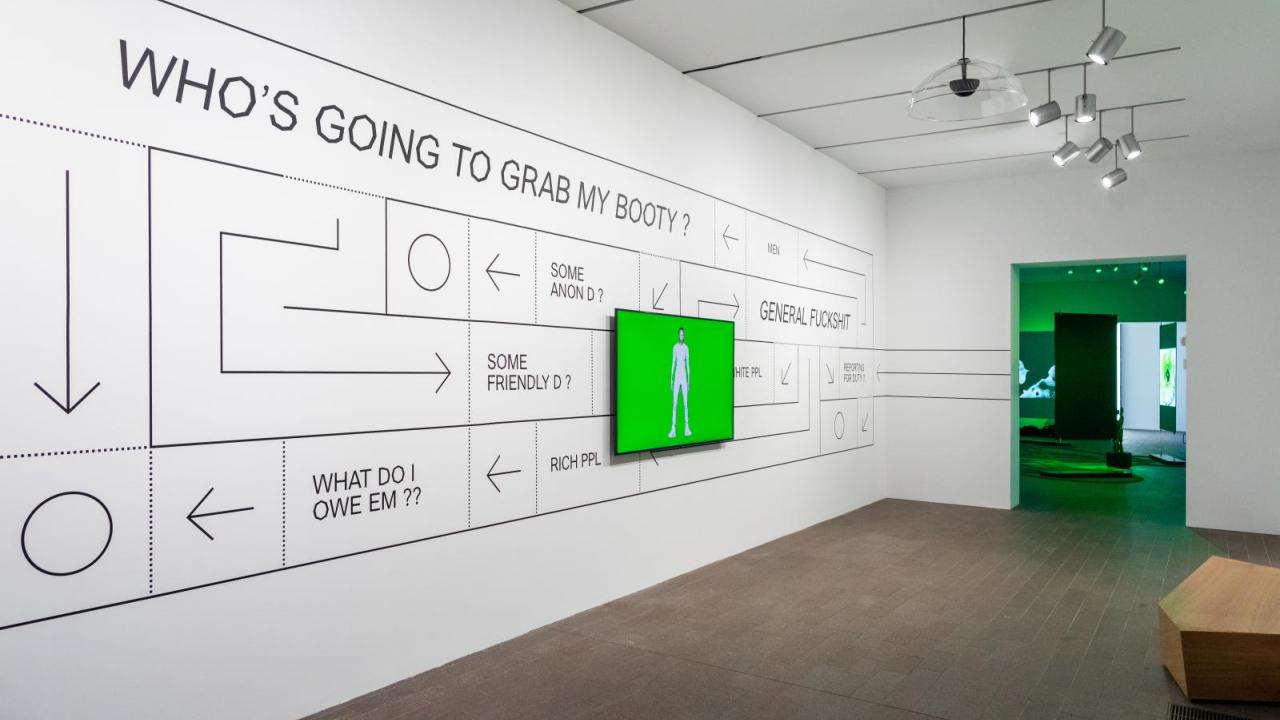
Martine Syms
Threat Model visually collapses digital and psychological space. The work’s title refers to the practice of threat modeling, a process of mapping a system’s vulnerabilities in order to maximize its security. In oversize vinyl letters that reinforce the sense of anxiety conveyed by the text, the work presents a large-scale representation of a threat map. But rather than laying out a network’s vulnerabilities, it reveals the artist’s insecurities and negative thoughts—what she describes as her “shame space.” Although specific to Martine Syms, the compulsively recurring thoughts on weight, sex, money, race, friends, and music are widely relatable.
This self-directed negativity also appears in Mythiccbeing. In this work, Syms appropriates her own body to create an avatar named Teeny. “Mythiccbeing—thicc’ ’cause she’s got hips,” she says of the bot. Syms refers to Teeny as an “anti-Siri.” Animated by a system of artificial intelligence, Teeny can respond to its audience through text. However, its demeanor is deliberately and exaggeratedly self-centered. It prefaces conversations by informing viewers that the upcoming exchange is not about them and that little of their input is necessary—disrupting their subject-oriented worldviews with its self-absorption. Its assertiveness counters the subservience consumers have been taught to expect of digital assistants. This is particularly true of bots with overtly gendered identities, such as Apple’s Siri and Amazon’s Alexa, whose design and marketing encourage an association between obedience and femininity. Such positioning suggests that the perspectives perpetuated by the male-dominated field of engineering are yet another instance of built-in bias to overcome.
Text 310.997.4973 to chat with Teeny.
Please be advised that the avatar uses language that may be offensive to some. Message and data rates may apply.
\ Wilsey Court

Stephanie Dinkins
Conversations with Bina48 unearths the racial dynamics embedded in artificial intelligence, robotics, and machine learning. The work takes the form of a series of interactions between Stephanie Dinkins and the social robot Bina48 (Breakthrough Intelligence via Neural Architecture 48). Bina48 is the brainchild of Martine Rothblatt, an entrepreneur who, with her wife, Bina, cofounded the Terasem Movement, an organization that seeks to extend human life through cybernetic means. In 2007, Martine commissioned Hanson Robotics to create a robot whose appearance and consciousness simulate Bina’s.
